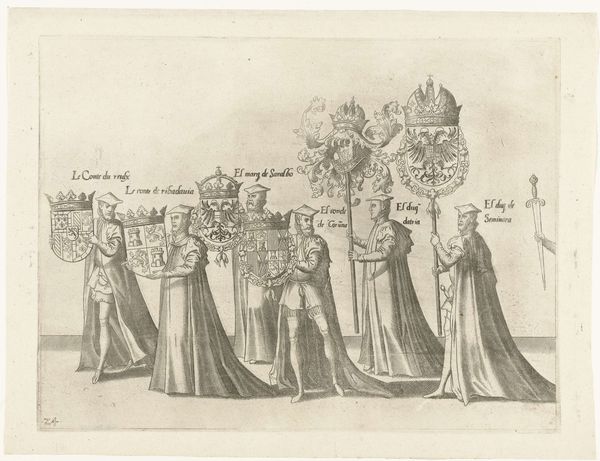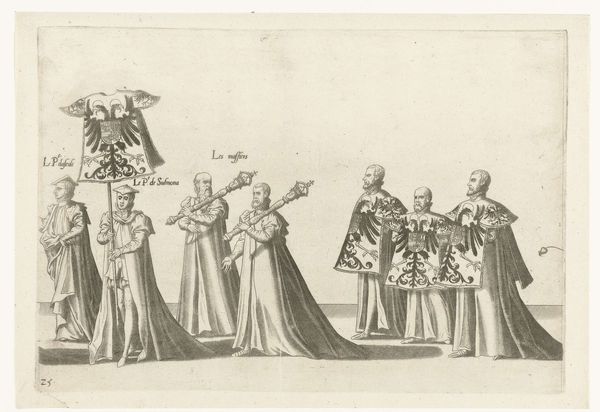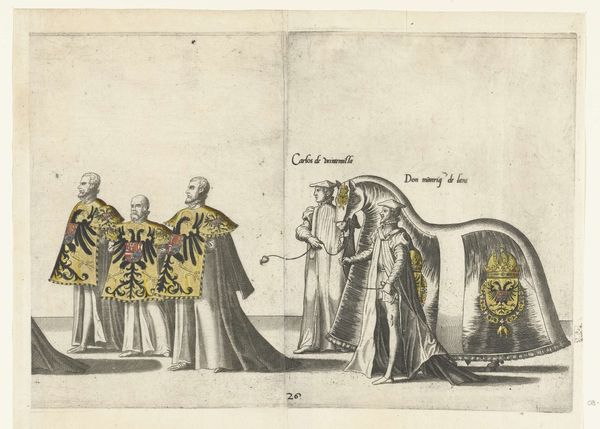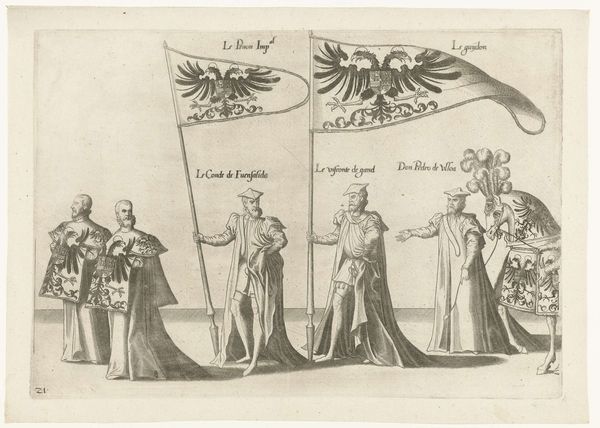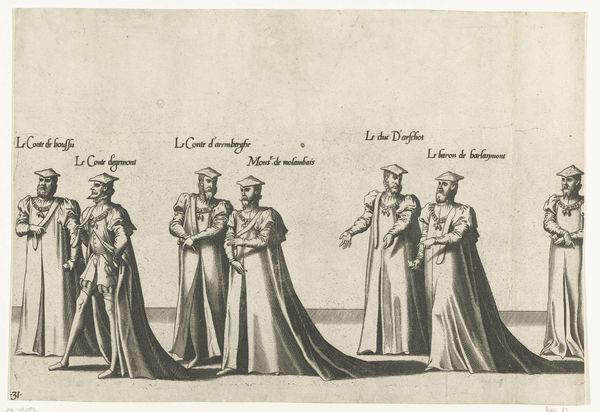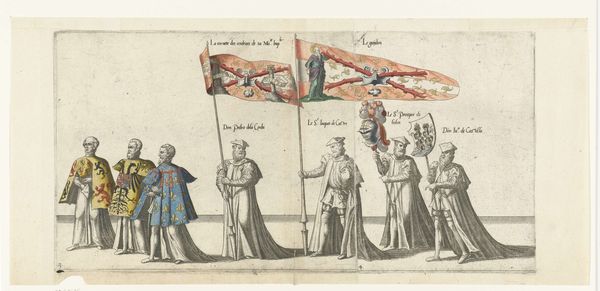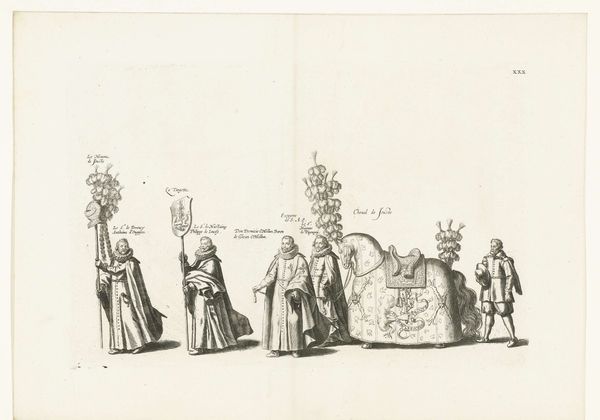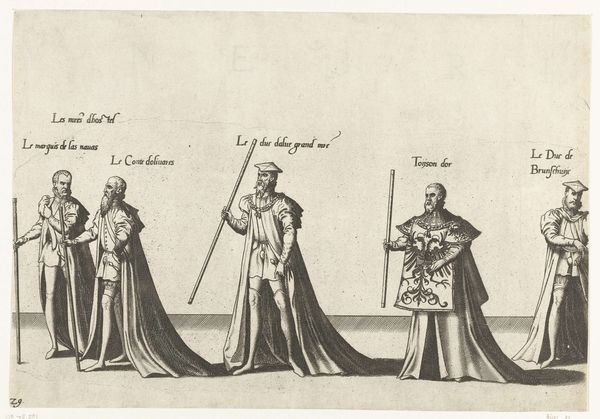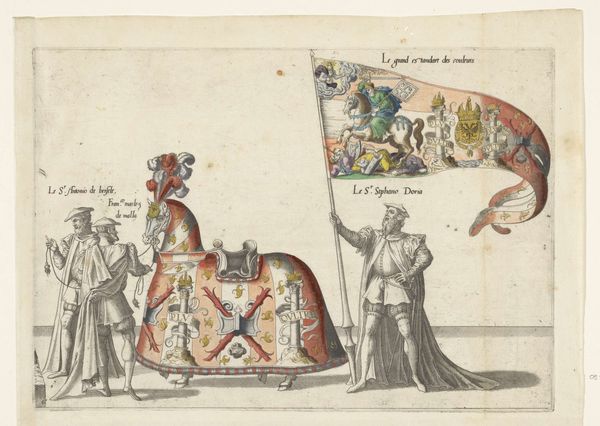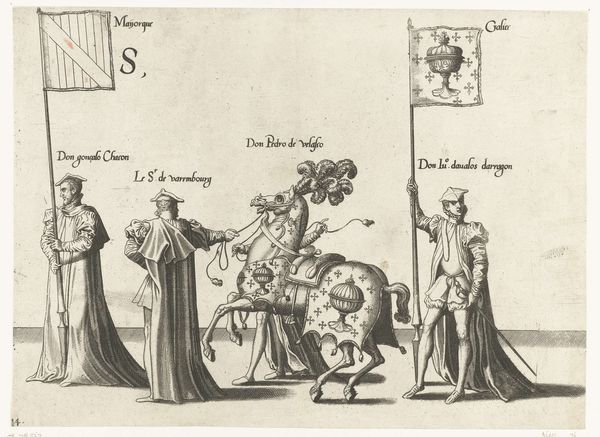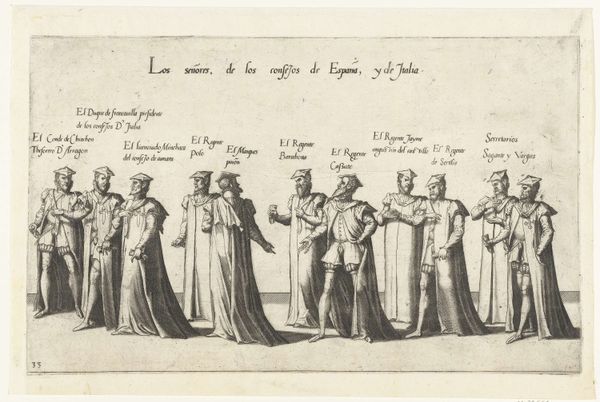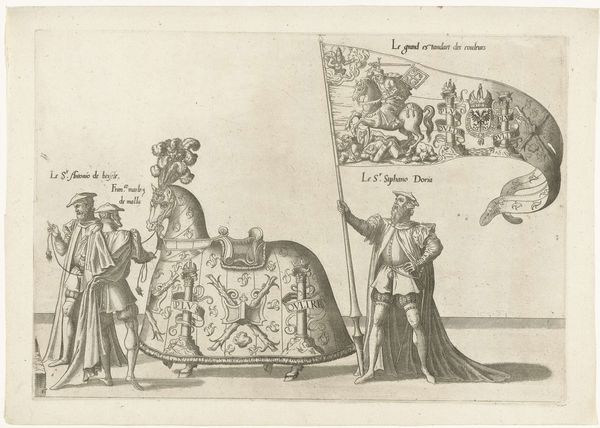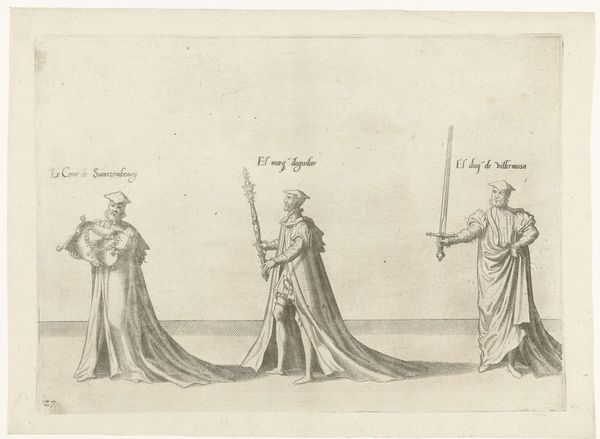
print, engraving
# print
#
mannerism
#
history-painting
#
engraving
Dimensions: height 240 mm, width 498 mm
Copyright: Rijks Museum: Open Domain
Editor: So, this engraving is called "Deel van de optocht, nr. 24 en 25," by Joannes van Doetechum, created sometime between 1559 and 1619. It depicts a procession of figures holding various emblems. It feels quite formal and ordered to me, but I’m curious – what do you see in this piece, considering it was made using the printmaking technique? Curator: As a materialist, I find the *process* of engraving utterly fascinating. Think about the labor involved! Each line meticulously etched into a copper plate, a repetitive and physically demanding task. This print, disseminated widely, served not only as art but as a form of propaganda. Consider the materials - copper, ink, paper – and how their interaction allowed the ruling class to project their power. Who were the skilled laborers producing these images and how were they compensated for their labor? Editor: Propaganda… interesting! The emblems are so elaborate, do you think there is any symbolism behind their design? Curator: Precisely! Every crest, every banner represents a specific power structure. By studying the social and political context, we can decode the language of these symbols. Think about who consumed these prints, and how that consumption shaped their perception of power. Was this displayed privately or circulated publicly? This adds to my initial consideration on production value: did Doetechum use the line medium for his financial convenience or for some other, potentially ideological, concern? Editor: I hadn't considered the implications of the print medium itself, how its reproducibility served a political agenda and provided or obfuscated opportunities for labor. It's like the material dictates its use and therefore, it's value to that society! Curator: Exactly! And looking at it from the viewpoint of labor challenges the canonization of these types of images! Editor: It certainly does. Thanks, I have a whole new perspective now. I can appreciate that print wasn’t *just* the technique!
Comments
No comments
Be the first to comment and join the conversation on the ultimate creative platform.
